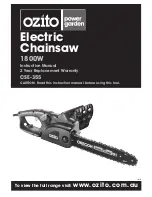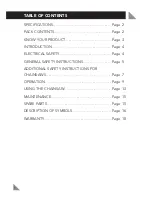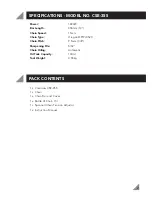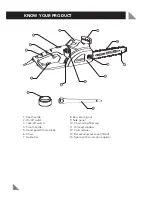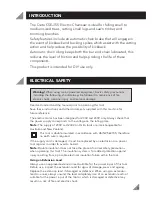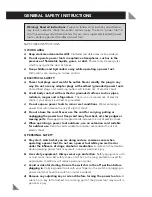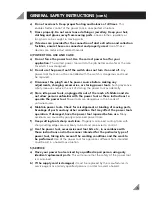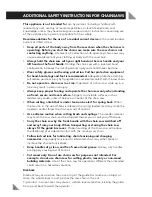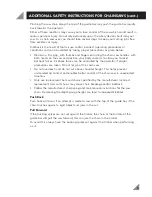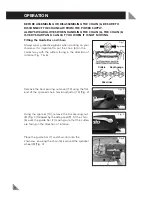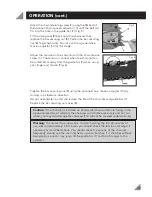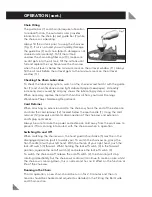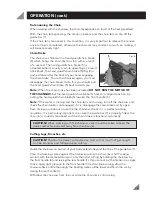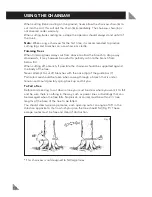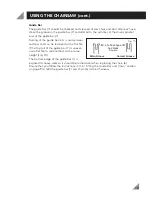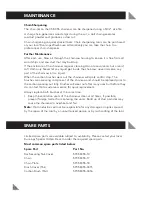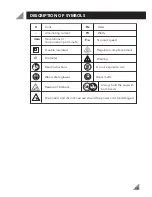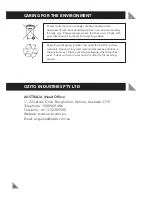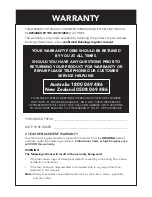
8
Pinching the saw chain along the top of the guide bar may push the guide bar rapidly
back towards the operator.
Either of these reactions may cause you to lose control of the saw which could result in
serious personal injury. Do not rely exclusively upon the safety devices built into your
saw. As a chain saw user, you should take several steps to keep your cutting jobs free
from accident or injury.
Kickback is the result of tool misuse and/or incorrect operating procedures or
conditions and can be avoided by taking proper precautions as given below:
• Maintain a firm grip, with thumbs and fingers encircling the chain saw handles, with
both hands on the saw and position your body and arm to allow you to resist
kickback forces. Kickback forces can be controlled by the operator, if proper
precautions are taken. Do not let go of the chain saw.
• Do not overreach and do not cut above shoulder height. This helps prevent
unintended tip contact and enables better control of the chain saw in unexpected
situations.
• Only use replacement bars and chains specified by the manufacturer. Incorrect
replacement bars and chains may cause chain breakage and/or kickback.
• Follow the manufacturer’s sharpening and maintenance instructions for the saw
chain. Decreasing the depth gauge height can lead to increased kickback.
Push Back
Push back will occur if an attempt is made to saw with the top of the guide bar, if the
chain touches against a rigid object and jams in the cut.
Pull Forward
If the bucking spikes are not set against the timber, the chain at the bottom of the
guide bar will pull the saw forward; this can jam the chain in the timber.
To avoid this always have the bucking spikes set against the timber when performing
a cut.
ADDITIONAL SAFETY INSTRUCTIONS FOR CHAINSAWS (cont.)

